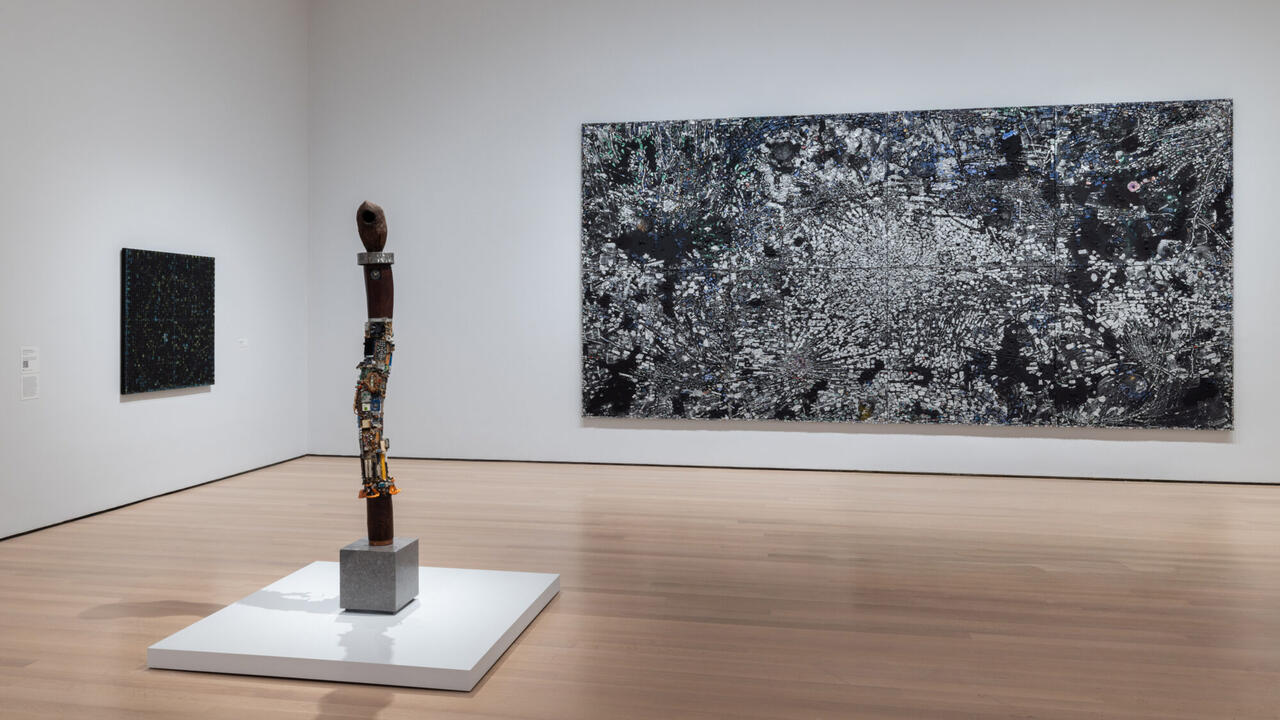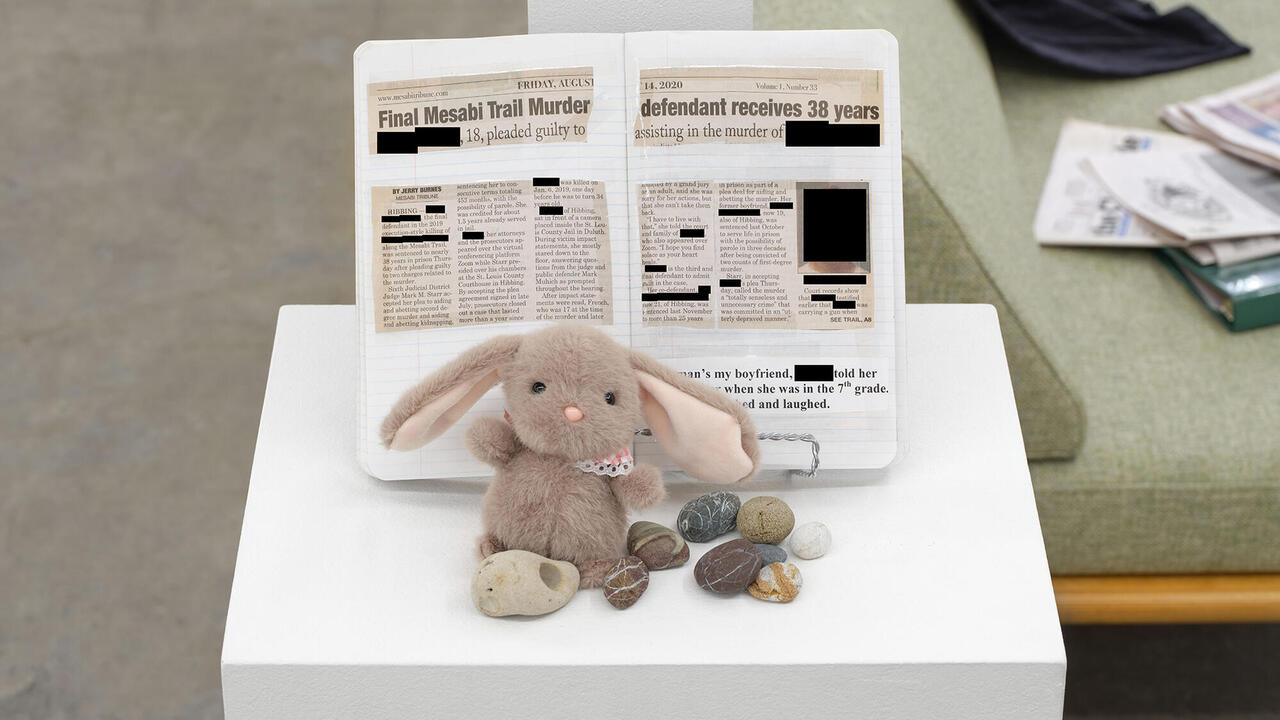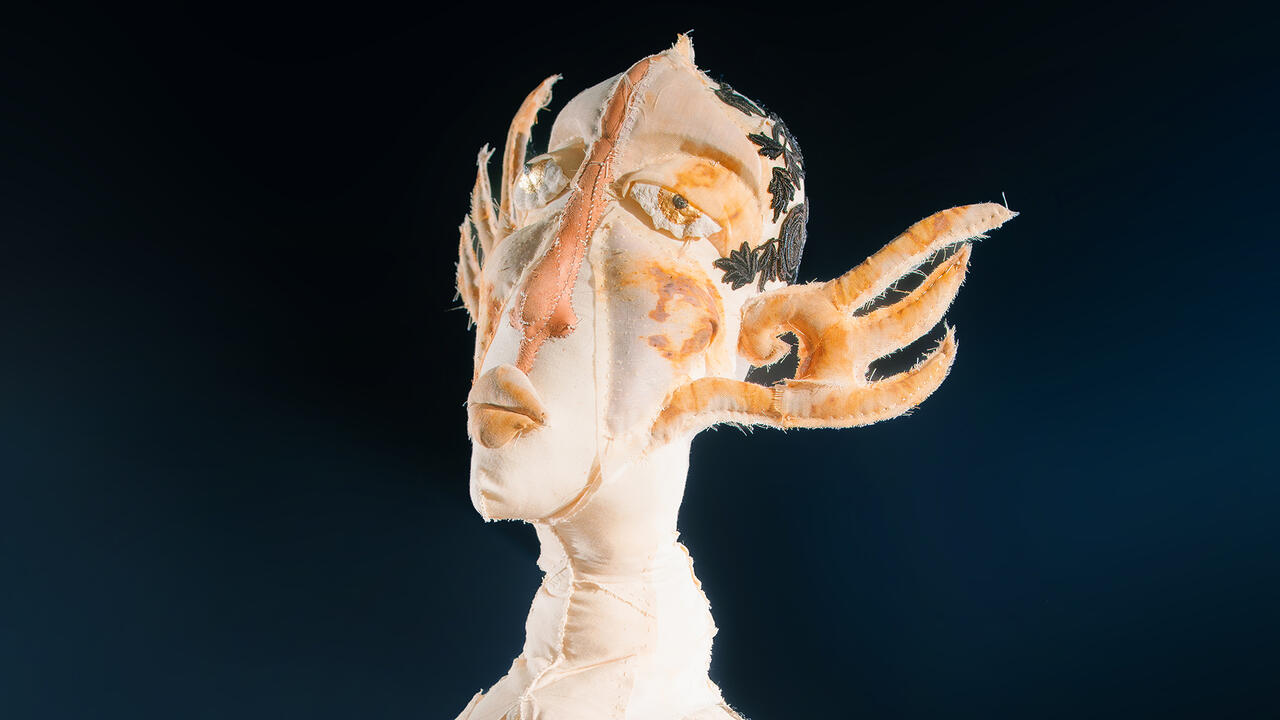Performing the Personal
On the art of Monika Baer
On the art of Monika Baer

Monika Baer’s paintings are seeded with doubt and the facts that they display are couched in severely prescribed parameters. It is not that you don’t believe what she shows you — realistically painted bottles, brick walls, playing cards and banknotes; luscious fields of light abstraction or patches of daubed impasto — it is rather that you don’t know how to take it. There is a palpable tension between the artificiality of her approach to her chosen medium and its potential for sincerity (the virtuosity of realism, the pathos of abstraction). Each of Baer’s paintings allows these contradictory factors to play out, while simultaneously casting everything into question. Who is the ‘I’ making these works? Who is responsible for their content and execution, for the development of a series? Is it possible to paint in the third person?
‘There’s a lot of mystery to me about writing and performing and showing off in general,’ said writer Joan Didion when asked about the difference between a desire for privacy in her life and writing about personal things in essays for public consumption. ‘I know a singer who throws up every time she has to go on stage. But she still goes on.’1 In Baer’s recent paintings, there is a similar sense of the personal performed for a public audience. In the series of large-format ‘alcohol’ paintings she made between 2013 and 2015, the foreground is inhabited by hyper-realistic, half-empty bottles of hard alcohol: Aperol, Campari, Hendrick’s Gin. The paintings’ backgrounds, meanwhile, perform abstraction in layered, washy pastel shades, while line-drawn, caricaturish faces hover unanchored before them. The initial starting point for this group of five works was James Ensor’s painting The Artist’s Mother in Death (1915), in which a tray heaving with medicine bottles forms the parapet behind which his mother is depicted, yellowish pale, reclining in death. In Baer’s reworking, the medicine is alcohol – that substance with an age-old role to play in the practice of painting (particularly that of 1980s Germany, where Baer began her artistic studies). Here, instead of being relegated to the anecdotal background as in Ensor’s work, however, alcohol is spotlit and diligently painted in a pathos-laden foreground. Can you read these paintings as a confession? Or, rather, as the performed confession of a cliché that still holds weight? Are these paintings fiction or non-fiction? First person or third?

‘Don’t you think it’s possible to do something and simultaneously study it?’ asks the narrator in Chris Kraus’s novel I Love Dick (1997). The question is asked in a letter written to Dick, the object of an infatuation that the narrator simultaneously experiences, performs and exposes. ‘If the project had a name it’d be I Love Dick: A Case Study.’2 For Baer – who was born in 1964 in Freiburg and studied at the Kunstakademie Düsseldorf from 1985 to 1992 – this possibility of doing something and studying it at the same time had everything to do with painting, a medium beleaguered by criticism and cornered, particularly in Germany, by tongue-in-cheek male posturing. ‘The available models, even if I’d given them an ironic twist, would really have been a bridge too far for me as a woman,’ says Baer. ‘I couldn’t quite fantasize my way into the genealogies associated with them. In my immediate milieu, painting and politics/theory appeared to be mutually exclusive.’3 Didion described an analogous situation with writing in the US, during the late 1950s and early ’60s: ‘There was a kind of social tradition in which male novelists could operate. Hard drinkers, bad livers. Wives, wars, big fish, Africa, Paris, no second acts. A man who wrote novels had a role in the world, and he could play that role and do whatever he wanted behind it. A woman who wrote novels had no particular role.’4 For a female painter in Germany in the 1980s, the canvas was similarly occupied territory: a realm belonging to the male painter, with or without his hard drinking, big fish and no second acts. Canvas, content and artistic identity all presented a challenge to a female painter. Baer’s solution was to conceive of the canvas as an overtly theatrical arena and to use this construct as a device to allow access to the practice, as if divesting its tasks to a self-devised third person whose role was more that of stage director than omniscient author of the mark.
A series of large paintings from 1997 transform the canvas into a proscenium on which marionettes in powdered wigs and bustled dresses perform. These scenes, based on images of Mozart performances at Salzburg’s Marionette Theatre, establish an off-kilter tone of rococo flamboyance, while abstract patterning at the margins seems to intrude from the wings. Their transforming of figurative painting into a theatrical stage set in which the figures are actual puppets begs the question: who is pulling the strings? These are paintings in which not just the subject matter but the whole enterprise is proposed as fiction, fully aware not only of its artificial framework and staged mechanisms, but of the contrived nature of the artist’s role.

The pragmatism behind Baer’s decision to adopt a theatrical approach as a means of gaining access to the field of painting continued to play a determining, though less literal, part in the artist’s subsequent works. These she devised in series, each of which was constrained by a strict set of operational parameters. The components that define each series do not add up to a coherent narrative; instead, cohesion occurs between the works, allowing their artificiality to lose its strange- ness and become familiar, while making space for variations. A series from 2008, which Baer refers to as the ‘breast paintings’, depicts white, cartoon-style breasts in profile, singly or stacked up one above the other, emerging from the seam in a denim-blue background. In 2009, brick walls began to make an appearance, and the compositions gradually developed to include swinging lengths of chain and blank white rectangles with rounded edges, like playing cards. In others, there are slices of sausage that seem to tumble from the painterly void like a greasy, fatty rain of gold; or thickly impastoed, flesh-pink monochrome canvases, their surfaces ruptured by little black keyholes. The artificial and anachronistic decisions that determine the scale, format and content of each series provide a framework within which to analyze the medium – to articulate doubt in painting through the very act of painting. As each work or series develops, like the early marionette paintings, it stakes out funda- mental questions about illusionistic space, the relationship between motif and surface, and the painter’s role in historical terms.
A compelling riddling logic leads from one body of Baer's practise to the next, as if each series tries to work istelf out of the cul-de-sac it has painted itself into.
There is a compelling, riddling logic that leads from one body of Baer’s practice to the next, as if each series tries to work itself out of the cul-de-sac it has painted itself into. This can even occur with a single piece, as in the case of Extended Failure (2011–12), where the ‘failure’ of the original canvas – a predominantly red work depicting a brick wall and a length of swinging chain – has been ‘extended’ by adding more canvas at the top and left side, expanding the work and allowing an extra swinging chain to be included, which bisects the picture plane in an arc. As this suggests, each work or series enacts a constant search for solutions to the problems that picture-making brings up. Motifs wander into the picture frame, while the contex- tual questions they ask (why money or meat or alcohol or breasts?) are counterbalanced by the ongoing investigation into how these things act in the picture plane. They appear, like props, to demonstrate the way a painting works: do they belong to the same illusion- istic space as the surface against which we see them? Each picture is contrived to estab- lish ‘a choreography of seeing’, Baer told me. ‘The rigidity of the paintings’ method is paired with a countertendency,’ she says, referring to the riddles and questions their contents propose.5 In her most recent series, ‘CMYK’ (2016), illusionism breaks out of the picture plane entirely and enters readymade territory, with miniature bottles of alcohol displayed on tiny shelves affixed to the bottom-right corner of each painting. While the motifs transmute like wandering thoughts (‘I can smell an idea coming around the corner,’ Baer says), the philosophical enquiry they insist on remains pitched at a constant, high-level intensity. Narrative, meanwhile, is siphoned off and condensed into a baffling synecdoche.

Painting as a medium is privileged in terms of the possibilities it affords to propose congruence between obviously incongruous elements. Baer takes advantage of this, so that the relation of motif to surface is a constant source of ambivalence, charging her works with a vital restlessness. This quality can be traced in the practices of several contempo- rary female painters and can be read in terms of the gender problem Baer pinpointed: ‘When I think about territories within painting, about how I saw them occupied and defined by painters who regarded them- selves as links in a genealogical chain – with which, as I said earlier, I myself felt unable to identify – I imagine my own position vis-à-vis them in an outside or in-between place.’6 The Los Angeles-based artist Laura Owens describes a similar ambivalence towards the act of mark-making: ‘I had asked myself, in a depressed mood: is it even possible for a woman artist to be the one who marks?’7 Neither Baer nor Owens sees this situation as a dead-end, however, but as a challenge that can revitalize the problematic territory of painting. ‘Isn’t it interesting’, asks Owens, ‘that a male orgasm has a DNA imprint which will replicate itself over and over again, reinforcing itself the way language or naming might, but the female orgasm has no use, no mark, no locatability? [...] I want to think about how that can be the model for a new gesture.’8 For a woman artist, the decision to paint is already a gesture and, beyond that decision, everything is a kind of performance. The adoption of gestural paint marks becomes an exaggerated inhabitation of an existing trope, as can be seen in both Owens’s oversize impasto daubings and the wilful mark-making in Baer’s works. The terrain of painting is occupied, which leaves it open to takeovers, as Baer puts it. A similar attitude can be found in Charline von Heyl’s self-conscious virtuosity in abstraction, or the theatrical staging of narra- tive in the work of painters such as Katharina Wulff or Amelie von Wulffen.
Despite the teasing proffering of illusion in Baer’s work, which goads its audience into believing what is so realistically presented, the surface is always cast in doubt. What are we to take as the uppermost layer of Extended Failure, for instance? Is it the strips of blank white canvas added onto the original or the realistically painted surface of the bricks, themselves used as the ground for graffiti-like scribbles? The tiny keyholes incised into the surfaces of the pink canvases mock the pose of the monochrome, as do the small round mirrors pasted onto some works, which reflect sliced-out discs of reality back at the viewer. The almost-uniform blackness of the series ‘on hold’ (2015), made alongside the alcohol paintings, stubbornly refuses to be a void: broad, black brushstrokes glisten perplexingly on the black surfaces. (Black ink has been added to the black acrylic.) It is both back- ground and foreground, insistent and present, while graphic labels of alcohol bottles float up in this ambiguous black space like night- marish visions, and stripes of colour cling obstinately to its surface. In Hole (2009), a brick wall is implied by dripping lozenges of red and pale pink, while a central grey area, Gunther Förg-like in its scrappiness, lazily implies a hole in the wall; a couple of thick squeezes of white oil paint sitting on some of the bricks nominally suggest a receding depth. This is a slack, wilful, almost slapstick take on illusionism. Walls, chains, darkness, alcohol – Baer devises constraints of many registers to suggest a kind of constant hanging over the abyss. ‘I must say,’ she admits, ‘after painting chains and brick walls for months, I did get the impression of constructing a prison mainly for the joy of breaking out.’9
1 ‘Joan Didion, The Art of Fiction No. 71’, interviewed by Linda Kuehl, Paris Review, no. 74, 1978
2 Chris Kraus, I Love Dick, Tuskar Rock Press, London, 1997/2015, p. 137
3 ‘Eye-Bait’, Monika Baer interviewed by Daniel Herleth, in Dominic Eichler and Brigitte Oetker (eds.) PS: Jahresring 61 – Jahrbuch für Moderne Kunst
(PS: Annual Ring 61 – Yearbook for Modern Art), Sternberg Press, Berlin, 2014, p. 212
4 ‘Joan Didion’, op. cit.
5 Monika Baer in conversation with the author, September/October 2016
6 ‘Eye-Bait’, op. cit.
7 ‘Optical Drive. Sarah Lehrer-Graiwer talks with Laura Owens’, Artforum, March 2013
8 Ibid.
9 ‘Surfacing’, Mark Prince, frieze d/e, Autumn 2012, pp. 81–89






















